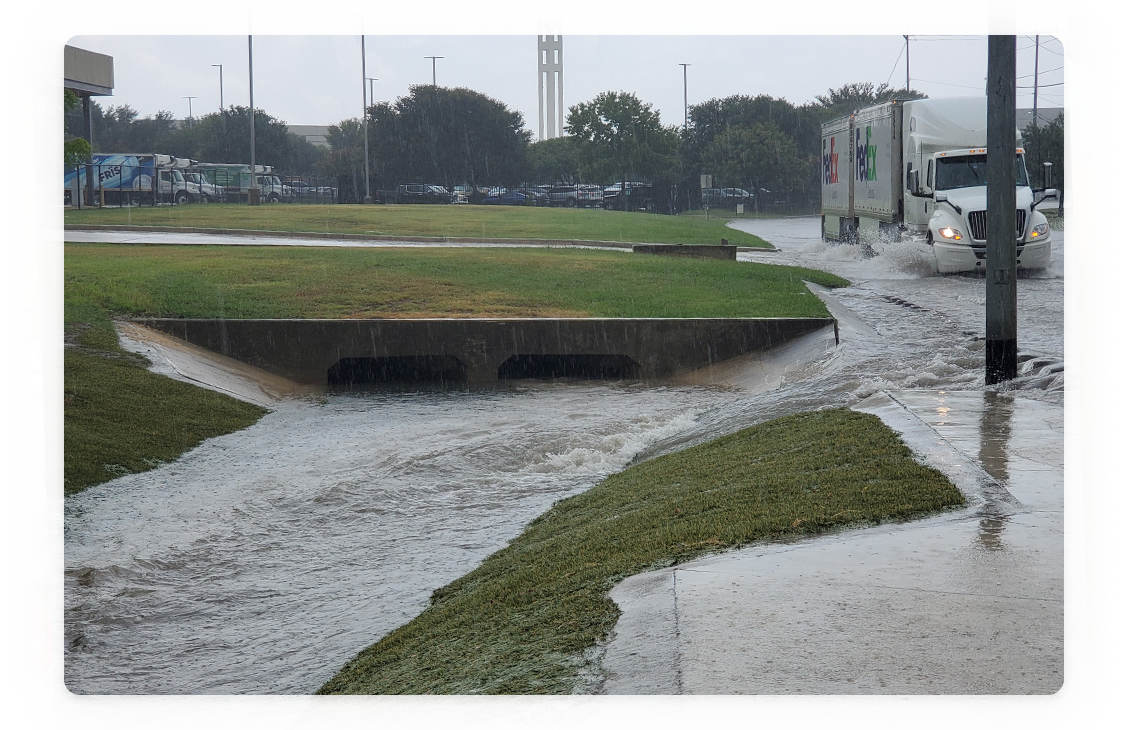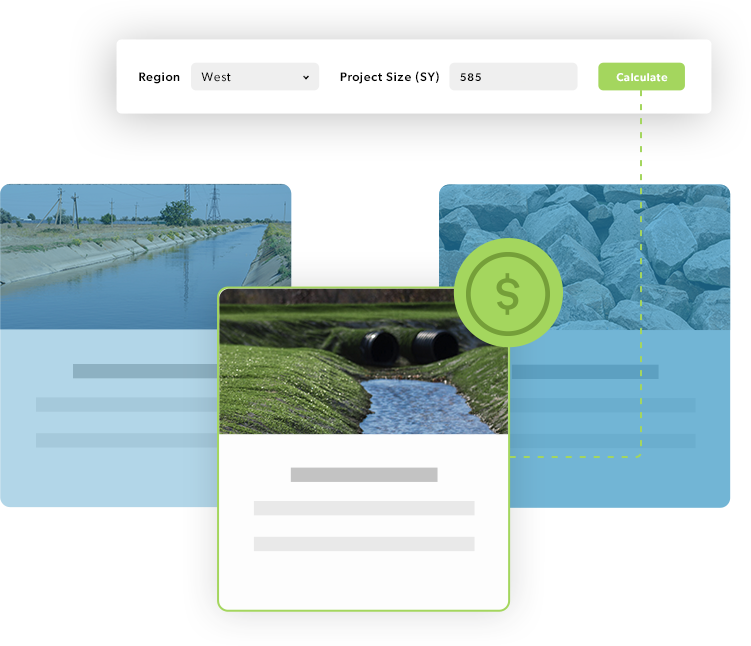
Articulated Concrete Blocks, Your Ultimate Guide
The significant lifetime value of Articulated Concrete Blocks, stemming from their exceptional durability and minimal upkeep needs, underscores their economic advantage. In areas facing high-velocity water flow or intense wave action, ACBs play a vital role in dissipating energy and safeguarding the soil, providing a reliable, sustainable, and financially prudent approach to managing the challenges of erosion and environmental degradation.
An erosion control system made from concrete Articulated Concrete Blocks is designed to form a flexible, mat-like cover over vulnerable areas such as riverbanks, shorelines, or slopes, protecting them from erosion. ACBs can be hand-placed or connected by cables or geogrids.
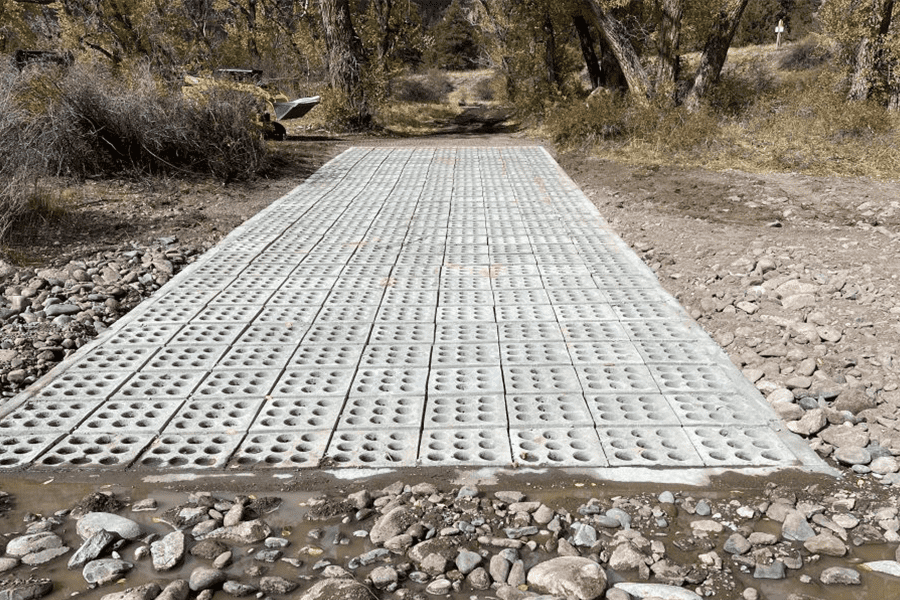
The interconnected nature of the blocks allows them to conform to changes in the underlying terrain while maintaining their structural integrity. This flexibility is vital in environments where soil movement or settling may occur. ACBs are particularly effective in areas exposed to high-velocity water flow or wave action, where they dissipate energy and prevent soil erosion.
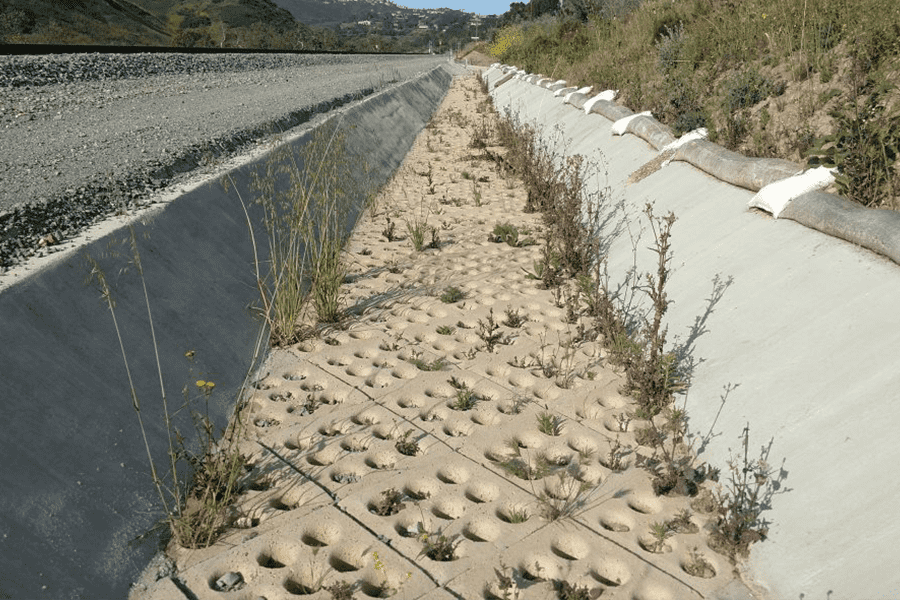
Articulated Concrete Blocks (ACBs) offer several benefits. They are designed to withstand harsh conditions, including high-velocity water flow and direct wave impacts, making them a preferred choice for erosion control in various environments.
• High strength and durability for robust erosion protection
• Flexibility to adapt to terrain changes
• Environmental compatibility with potential for vegetation growth
• Enhanced aesthetic appeal of protected areas
• Straightforward installation with reduced site disturbance
• Long-term stability with minimal maintenance needs
• Cost-effective due to lower repair and replacement frequency
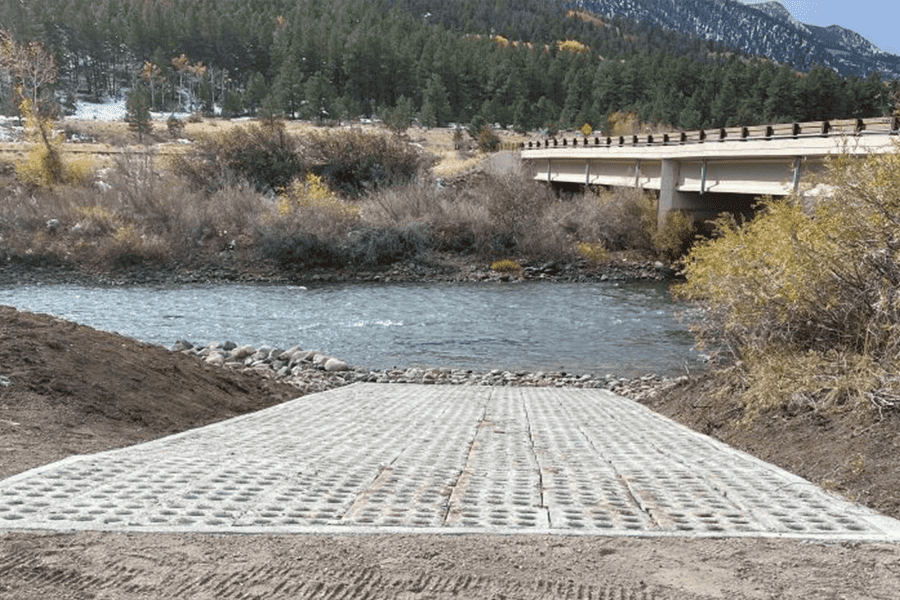
Well-suited for applications requiring robust and adaptable erosion control, Articulated Concrete Block's primary use areas are in water-related environments, such as riverbanks, lake shores, and coastal regions. They are also widely used in manufactured water structures like channels, spillways, and drainage ditches, where their ability to withstand heavy water flow and prevent soil washout is crucial.
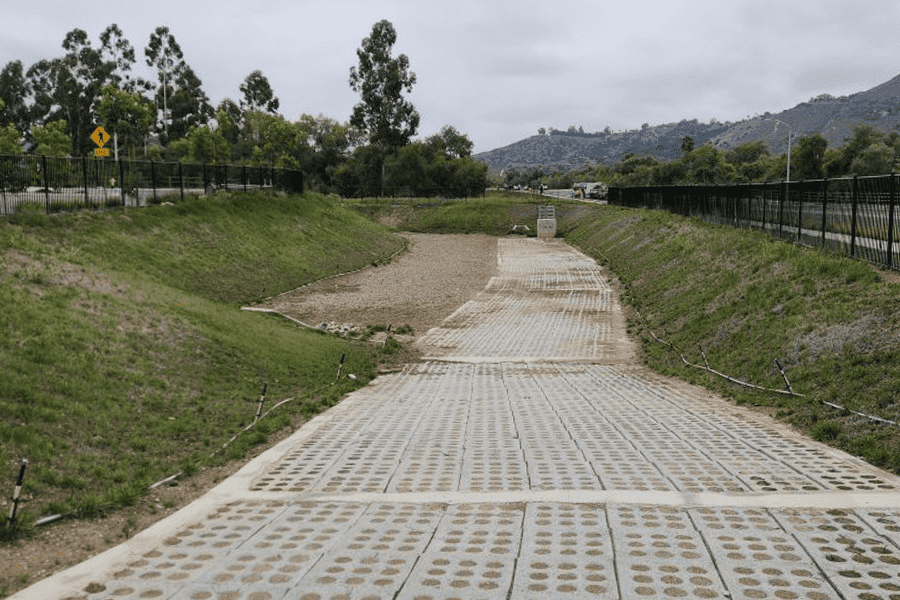
They are relatively easy to apply, requiring standard site preparation and installation, but their effectiveness depends on proper planning and execution. Hand-placed systems require a small crew to deploy each unit, whereas ACB mat systems require equipment to lift and lay each piece into place.
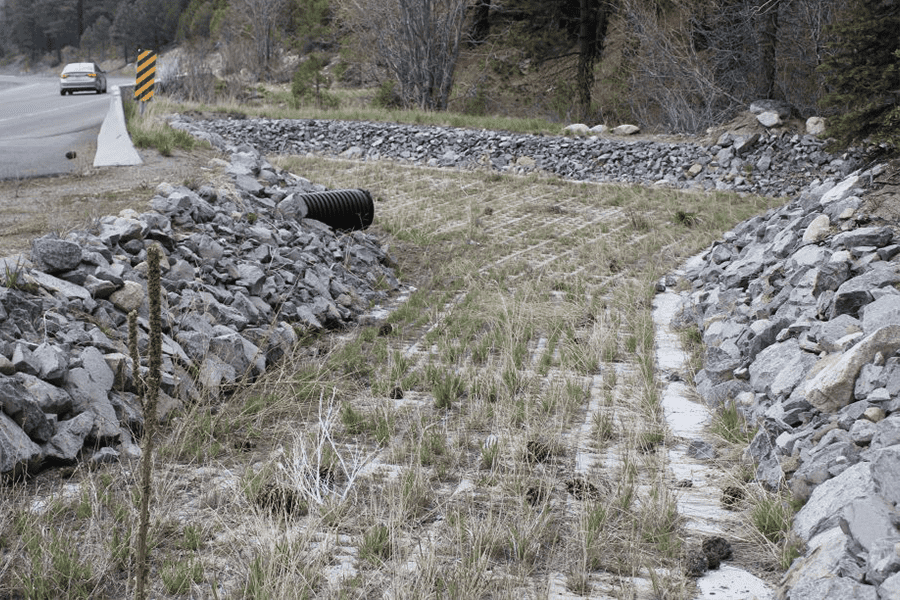
Known for their low maintenance requirements, Articulated Concrete Blocks are inherently durable and resistant to weathering, erosion, and other environmental factors, reducing the need for frequent repairs or replacements. Routine inspections and occasional debris clearing make them a low-upkeep solution for erosion control.
Primarily due to their durability and long-lasting nature, the lifetime value of Articulated Concrete Blocks (ACBs) is significant, as their ability to withstand harsh conditions for many years without significant degradation makes Articulated Concrete Blocks a cost-effective solution for long-term erosion control.
Using Articulated Concrete Blocks (ACBs) for slopes and channels involves well-defined steps to ensure effective installation and optimal erosion control. Here's a step-by-step guide for both applications:
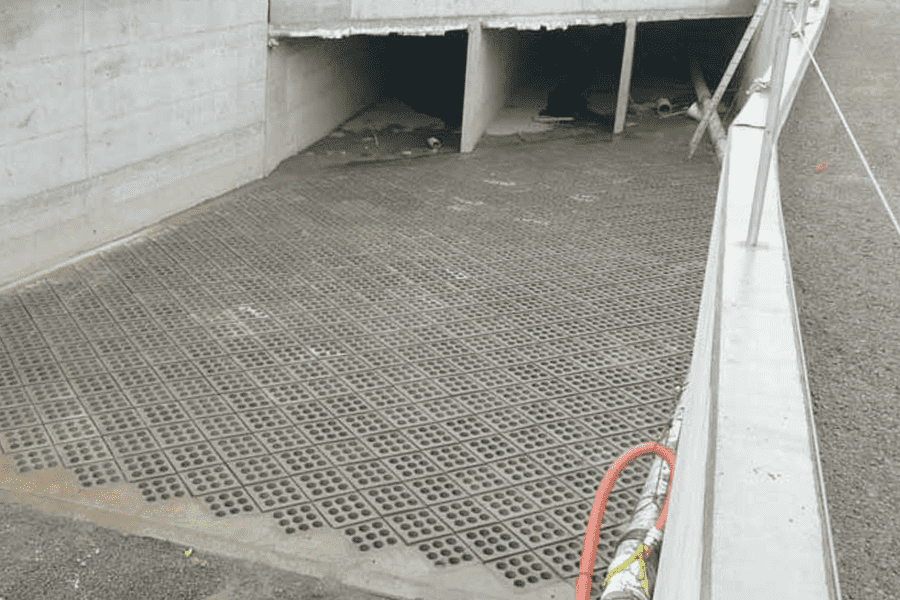
1. Site Preparation:
A. Clear the slope of debris, vegetation, or obstacles.
B. Grade and compact the hill to create a stable and uniform surface.
2. Underlayment Installation (if needed): A. Lay a geotextile fabric or similar underlayment to support and prevent soil erosion underneath the ACBs.
3. Placing the ACBs:
A. Begin at the base of the slope and lay the articulated concrete blocks.
B. Ensure the blocks are interconnected correctly and cover the entire slope uniformly.
4. Securing the Blocks: A. Anchor the blocks into the ground using stakes or other anchoring systems, especially on steeper slopes. Perimeter trenching may also be necessary to prevent the system from being undermined during high-velocity stormwater events.
5. Vegetation (optional): A. Plant vegetation between the blocks if the design allows, choosing species suitable for the local environment and slope conditions.
6. Final Inspection and Adjustments:
A. Inspect the installation to ensure complete coverage and stability.
B. Make any necessary adjustments to the blocks or vegetation.
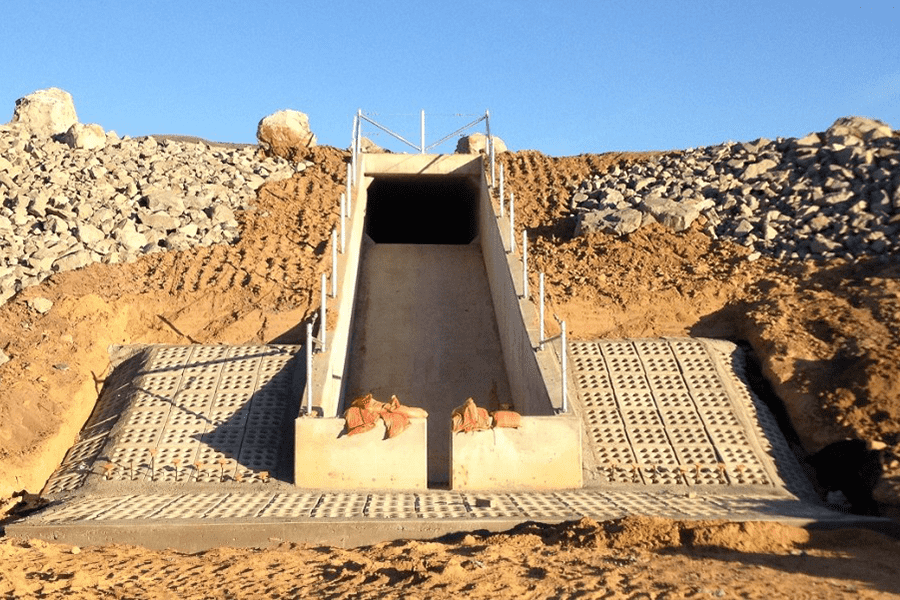
1. Channel Preparation:
A. Clean and shape the channel to the desired dimensions and gradient.
B. Ensure proper drainage and flow lines are established.
2. Underlayment Placement: A. Lay a suitable underlayment in the channel bed to prevent soil erosion beneath the ACBs.
3. Installing ACBs:
A. Place the articulated concrete blocks along the channel bed and sides, starting upstream and working downstream.
B. Ensure that the blocks fit snugly together and conform to the shape of the channel.
4. Anchoring: A. Secure the blocks firmly to withstand water flow, using anchoring systems as required. Perimeter trenching may also be necessary to prevent the system from being undermined during high-velocity stormwater events.
5. Vegetation (optional): A. Establish vegetation between the blocks for additional stabilization and ecological benefits if the design permits.
6. Maintenance Checks: A. Regularly inspect the channel, especially after significant rainfall or flow changes, to ensure the integrity of the ACBs.
Due to their durability and low maintenance requirements, Articulated Concrete Blocks (ACBs) can save significantly by reducing long-term repairs, replacements, and upkeep costs.
Articulated Concrete Blocks represent a comprehensive and efficient approach to managing erosion and enhancing environmental stability. Their ease of installation and low maintenance requirements make them a cost-effective solution for long-term erosion control.
By seamlessly integrating strength, flexibility, and environmental compatibility, ACBs offer robust erosion defense and contribute positively to the aesthetic and ecological quality of the landscapes they protect. In essence, ACBs provide a reliable, sustainable, and financially prudent approach to managing the challenges of erosion and environmental degradation.
To fully understand the potential of these solutions for your specific project, submit your project details to identify if you can accomplish your ongoing or upcoming slope and channel project at a lower cost.
